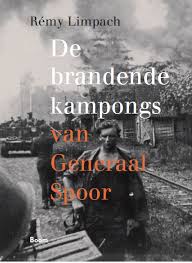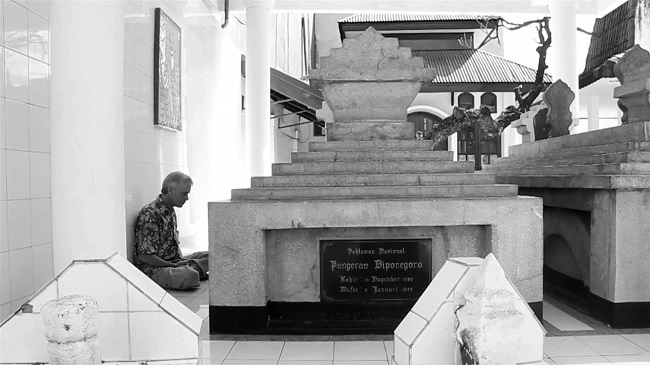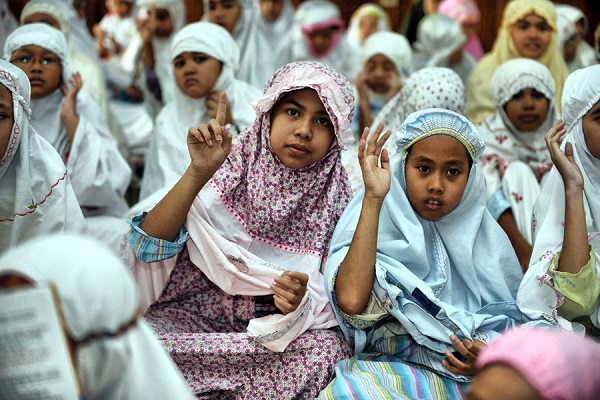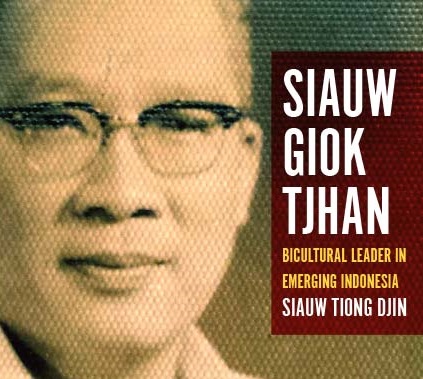Joost Coté
In the Netherlands, the 1945-1949 Indonesian war of independence is being re-fought by a new generation of Dutch scholars and writers. They are aided by changing attitudes within venerable public institutions that were once the pillars of an agreed Dutch (imperial) narrative. While the ‘dark history’ concerning the last days of the Dutch empire should come as no surprise in an international forum, what is surprising is that the process of post-imperial introspection has come so late to the Netherlands.
Unfortunately, to date, language barriers have limited international inspection of these acts of Dutch soul searching. This brief review of two recent Dutch-language books dealing with the Netherlands’ conduct in its war against Indonesia aims to alert Anglophone Indonesianists to the existence of these developments.
Contemporary interest in the nation’s ‘dark past’ can be traced back to several Indonesia-initiated court cases in 2011 citing Dutch military crimes. These cases elicited official apologies and compensation from the Dutch government. Now, in part as a result of a research project being undertaken by a consortium of Dutch research institutes (for which the Dutch government agreed to provide funding in December 2016), the details of atrocities committed during the 1945-1949 Indonesian war of independence are coming to light.
A study completed in June 2017 has revealed that ‘officially’ the four-year war cost the lives of 97,421 Indonesians, of whom 75,636 were in Java, with more than half occurring in 1949. This figure can now sit alongside the official death toll of 4751 Dutch military personnel and an estimated 30,000 Dutch civilians. Historian Adrian Vickers has estimated the number of Indonesian civilian deaths at anything up to 100,000, but the army statistics on which this Dutch study is based, make no reference to civilians – only ‘the enemy’.
The academic analysis
Rémy Limpach’s research takes us much further than the conclusion arrived at by Gert Oostindie’s Soldaat in Indonesië (Soldier in Indonesia, 2015), the earlier exposé of Dutch war crimes published in 2015. That book – with its somewhat ambiguous subtitle that translates as ‘witnesses to a war on the wrong side of history’ – was based on analysis of a range of veterans’ memoirs. As I have written elsewhere, it concluded that Dutch ‘war crimes constituted a “structural” element in the conduct of the counter-guerrilla war … but not a “systemic” one’. By comparison, Limpach’s book concludes that the unwarranted burning of villages, torture, mutilation and ‘illegal execution’ of Indonesians/civilians formed a systemic element of the Dutch campaign – authorised or condoned at the highest levels.
Limpach’s book is not about numbers. He frames his account in terms of a discussion on ‘massageweld’, a Dutch translation of the English ‘mass violence’, and ‘extreem geweld’ (extreme violence) – the term employed in most section headings of the book, which in global discourse might best be translated as ‘war crimes’. While this term, he explains to Dutch readers, ‘derives from genocide research and is employed by researchers as an analytical and conceptually neutral tool to describe the variety of non-genocidal mass killings or other forms of extreme violence’, he does not mean to imply there is ‘any relationship to genocide’ (my translation). Terminology is important in the Dutch context. Since an earlier 1962 government report into the activities of Dutch forces between 1945 and 1949 (the so-called ‘Excessen Nota’), officially the euphemistic term ‘excesses’ had been employed.
It is impossible to summarise the contents of this enormously detailed book, but briefly, after a lengthy preliminary discussion of theoretical considerations and historical background, the detailed discussion gets underway in Chapter 3, which provides an overview of the first year of the war (November 1945 to November 1946). This, and particularly the period from September 1945 to April 1946, features most prominently in Dutch memory as the ‘Bersiap’ (‘Get ready’).
As Limpach documents, the Bersiap accounts for the most significant continuous period of ‘mass violence’ by all sides (Dutch, British, Australian, Indonesian and Japanese) against all groups (Indonesians, white Europeans, Indo-Europeans, Chinese and Japanese). As well as detailing systemic violence perpetrated by Dutch forces, a lengthy separate section details the systemic violence by British forces – largely following the early work of Richard Macmillan in The British Occupation of Indonesia, 1945-46 (2005). Here, and at the end of the volume, Limpach also discusses evidence of violence by pemuda (Indonesian youth), the TNI (Indonesian Army), Hesbollah and Indonesian urban criminal elements carried out during and after the Bersiap period.
Chapters 4 and 5 provide detailed analysis of case studies and different forms of war-related violence: ‘The South Celebes affair’ (in which Australia features prominently), ‘Rawagede: the Dutch My Lai’ (for which the Dutch government has offered an official apology), ‘Terror in Tjilitan’, ‘Mass murder in Malang’, ‘Amok in Kendl’ and the ‘Bali drama’. Of these cases, the atrocities committed by Captain Westerling had long been known publicly and were investigated at the time. For that reason, Westerling’s activities have long been held up as the exception that proved the rule of an otherwise ‘reasonable’ Dutch response to Indonesian provocation. We now know this behaviour was not out of the ordinary.
Limpach reveals the complicity of Australian forces in Allied sanctioned violence between September 1945 and January 1946, when assigned to ‘control’ South Sulawesi. Australian forces effectively employed the same strategies as the British in Java. Like the British, the Australian commander Brigadier FO Chilton blamed Dutch forces (including Ambonese) for the ‘excesses’ and for the escalating violence in the region. Chapter 5 moves from geographic locations to ‘types’ of violence: the use of ‘war machinery’ (tanks, artillery, planes and ships), lawless plundering, arson, treatment of prisoners in the field, mistreatment during interrogation, and violence against women and children.
Chapters 6, 7 and 8 investigate contemporary punishment of war crimes, and historic attempts by Dutch authorities in and off the field to investigate, control and prevent ‘extreme violence’. This is followed in Chapter 9 with an examination of cases of the reporting of and opposition to war crime activities. Chapter 10 offers some tentative conclusions on the possible causes for the use of ‘mass violence’ by both Dutch and Indonesian forces.
Undoubtedly, Limpach’s book on the war in Indonesia will provide a basis for further research, in particular by Indonesian historians, and will contribute to a broader international debate on the nature of war crimes.
The personal account
Where Limpach’s account of violence is presented in measured academic prose, Alfred Birney’s is an intentionally raw and harrowing personal account of a life torn apart, not just by war, but by the whole destruction of colonial society in Indonesia.
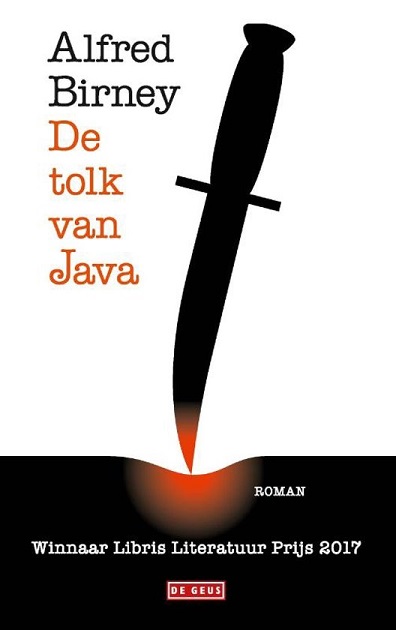
Birney’s ‘novel’ De Tolk van Java (The Interpreter of Java, 2016), now in its eleventh reprint, appeared almost simultaneously with that of Limpach’s, and the book covers much of the same ground and shares the theme of violence, but takes a quite different approach. It concerns what purports to be the life of the author’s father, based on his post-war memoir as later read by his son. While the focus is the father’s violent life in Japanese-occupied and post-war Java, the novel’s main message is how the trauma resulting from a young colonial life steeped in murderous horror plays out in the heart of post-imperial Netherlands.
Taken together, the two books dissect the implications of the legacy of the moment of decolonisation and its meaning for contemporary Netherlands.
Birney’s book stretches from wartime Java to contemporary Netherlands, alternating its focus between various protagonists: ‘Arto’ (alias ‘Arend’ or ‘Nolan’) the mixed race, multi-identity, strongly pro-Netherlands, colonial youth and later traumatised father; the young Dutch country girl who becomes his much suffering wife and the narrator’s mother; and the son, the author’s alter ego, the reader of the memoir and representative of contemporary Netherlands attempting to understand this product of a colonial past.
The first part of the book sets the scene for what is to come. It begins innocently with the delightfully ‘provincial’ voice of the young woman who becomes the wife and mother, before switching to Japanese-occupied Java to reveal the central character’s first tentative acts of violence, then back again to the Netherlands to witness the son’s experience of growing up in a dysfunctional household.
The reader is now deeply embedded in what is to become an increasingly bloody, violent and gruesome life story. From murdering Japanese and Indonesian collaborators, Arto graduates to becoming an adjunct to Dutch and British forces as spy, inquisitor and unofficial executioner – the ‘interpreter’ of the title – until it becomes too dangerous for him and he is extricated from Java to the Netherlands. Against the Indonesian revolution but friends with his Indonesian school chums; despised by the white community but desperate to prove worthy of it through his murdering; despite his confused mixed heritage he sees himself as the only true and loyal subject of the Dutch Queen. All is described in a relentless, flat and unemotional narrative style that evokes a voice of barely controlled psychotic anger.
And here, then, we are confronted with what lies at the heart of this factional, novelistic autobiography – anger. A release of the anger that flows from the central figure, the confused Chinese-Indonesian-Eurasian, pro-Netherlands ‘coloured’ product of colonialism. It is an anger that flows through the lives of the son and his brothers and mother, flows through the history of post-war Netherlands, and was still present at the recent Dutch elections.
Both Birney’s novel and Limpach’s research point to the dark heart of post-imperial Netherlands. Together, in more than a thousand pages of fact and faction, Limpach and Birney begin to pull open the scabs of old historical wounds with the hope of reconciling the present with the past.
Alfred Birney, De Tolk van Java (The Interpreter of Java), De Geus, 2016.
Joost Coté is a senior research fellow at SOPHIS, Monash University.

